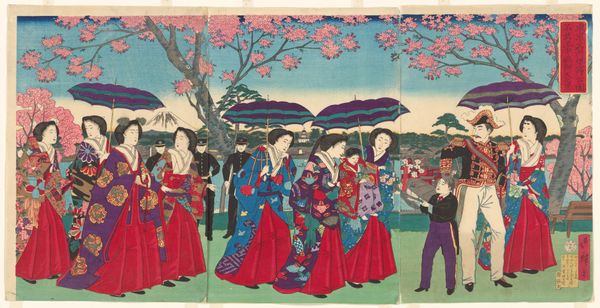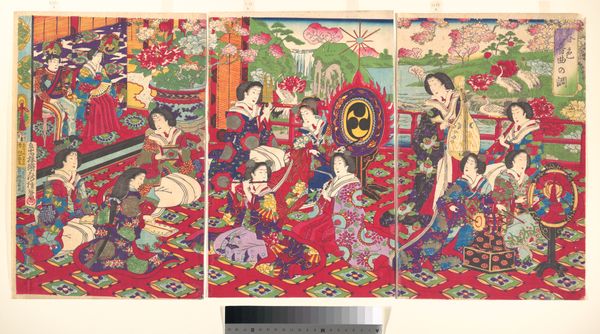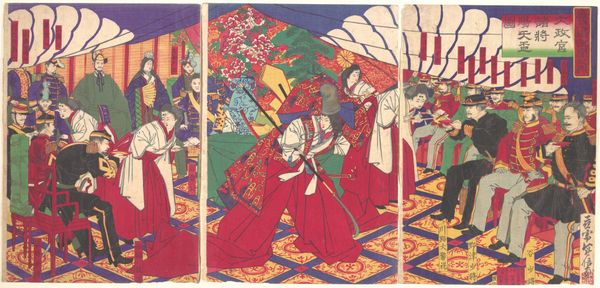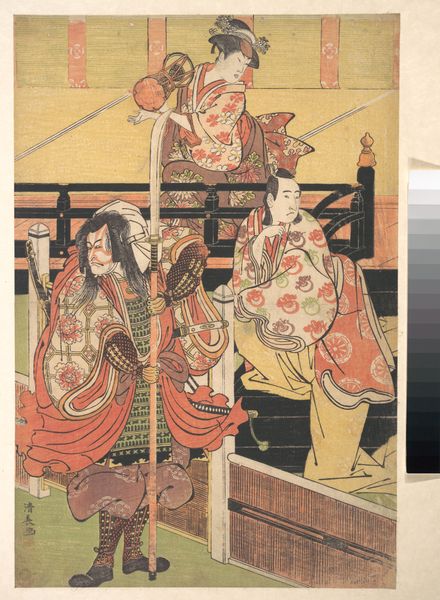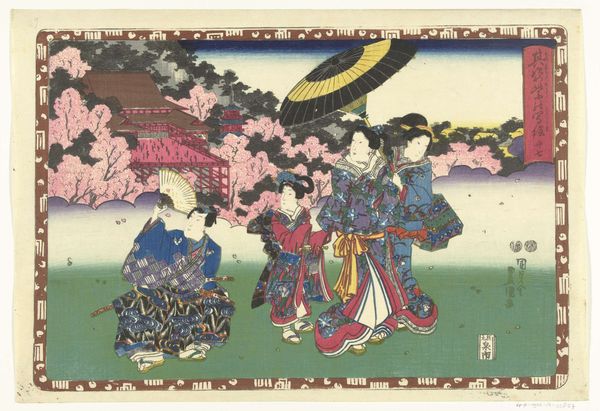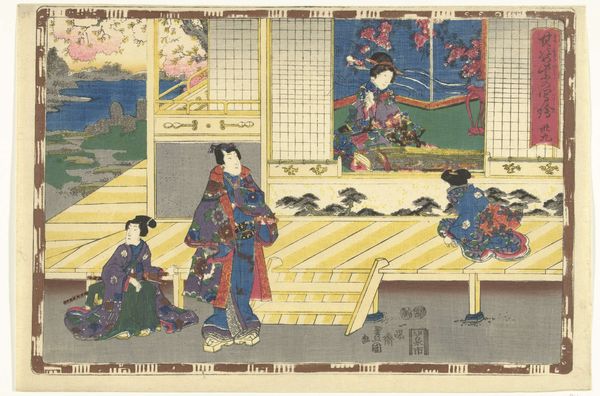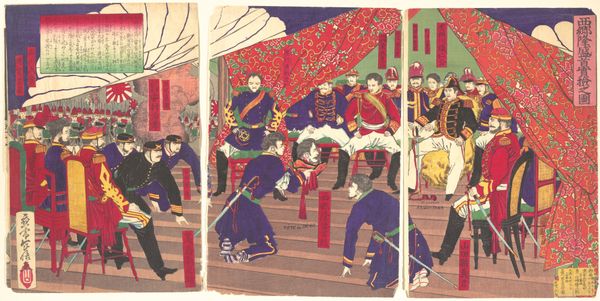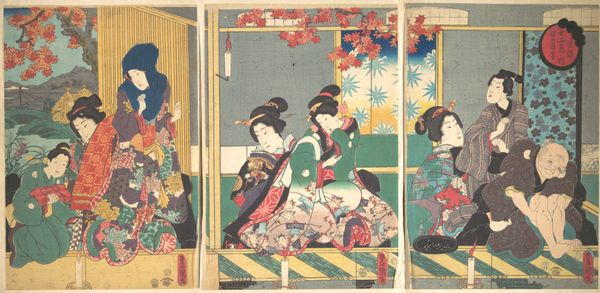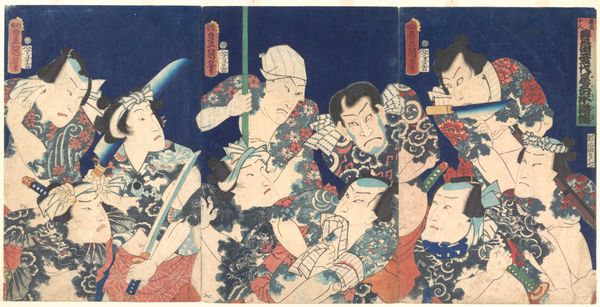
A Glimpse of Higayashiyama the Western Capital, from the series Famous Places in the Nation (Shokoku meisho zukai no uchi-Saikyō Higashiyama ichiran) 1880
0:00
0:00
Dimensions: 14 1/2 x 29 1/8 in. (36.8 x 74 cm)
Copyright: Public Domain
Curator: Let’s take a moment to appreciate Utagawa Hiroshige III's "A Glimpse of Higashiyama, the Western Capital, from the series Famous Places in the Nation." This woodblock print, created around 1880, gives us insight into the Meiji period through its vibrant colors and carefully constructed composition. Editor: The first thing that strikes me is the boldness of the color. The bright red sky paired with such elaborate patterns creates a festive, yet almost unsettling mood. Curator: It is worth discussing how the choice of woodblock printing—a medium often associated with the broader populace—intersects with depictions of the elite, hinting at changing social structures during the Meiji Restoration. How did access to and the creation of these prints influence socio-political consciousness? Editor: I think the medium is key, though the overt displays of wealth—the elaborate kimonos, the military uniforms—all scream of conspicuous consumption during a period of rapid industrialization and westernization. These images of leisure broadcast power and influence. And consider the labor—the hours that artisans poured into cutting and printing, and whose stories often get overlooked? Curator: Precisely. The print’s composition, which combines Western perspective with traditional Japanese artistic styles, represents a complex negotiation of cultural identities in a period where Japan opened its doors to the world but remained cautious of its own place in global power dynamics. It also presents interesting questions regarding cultural exchange. Editor: This brings up questions about authenticity and representation. Was this intended for a local audience, or was there already an eye toward the Western gaze? The detailed depictions of both the landscape and the clothing definitely make me curious about the labor conditions. What wood was used? How were the pigments sourced, processed, and distributed? It's so much more than just the final image. Curator: Examining this work allows us to unpack tensions and the complex realities of Japan's modernization era. Editor: It certainly offers a rich starting point for considering the relationships between class, labor, and the burgeoning global economy in the late 19th century.
Comments
No comments
Be the first to comment and join the conversation on the ultimate creative platform.
